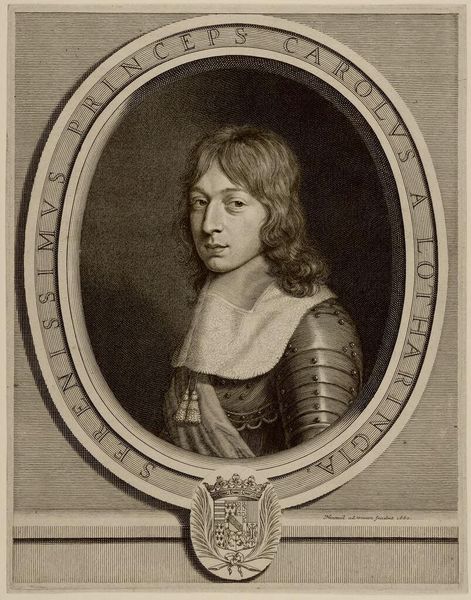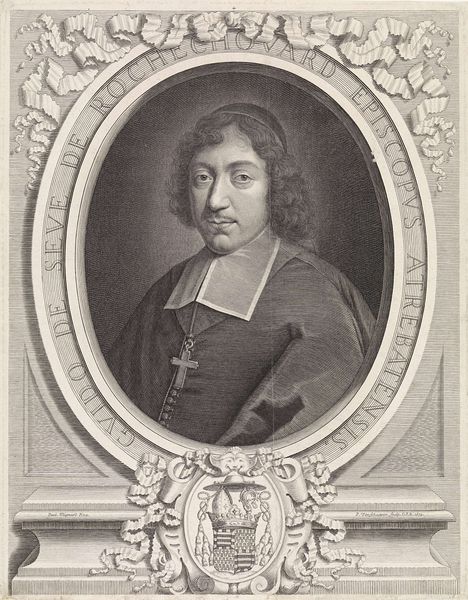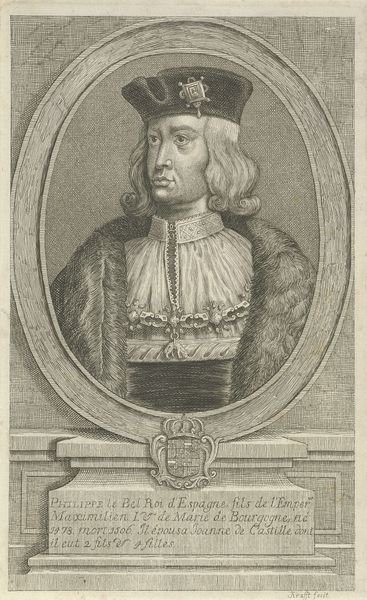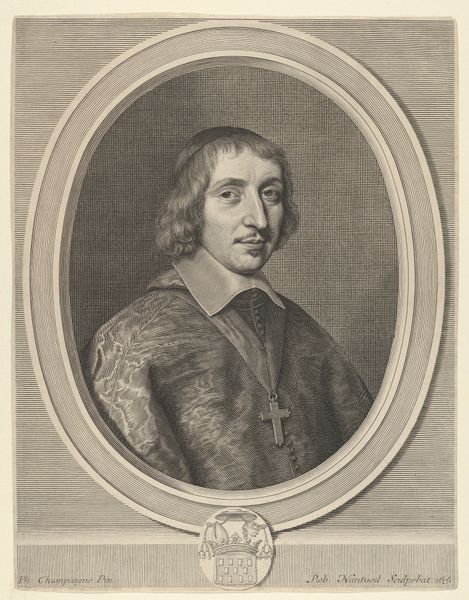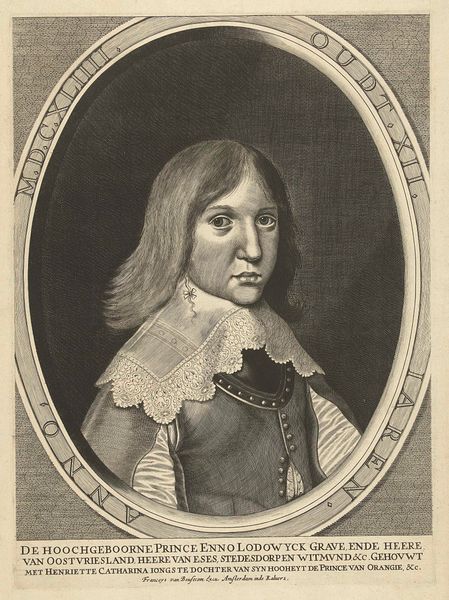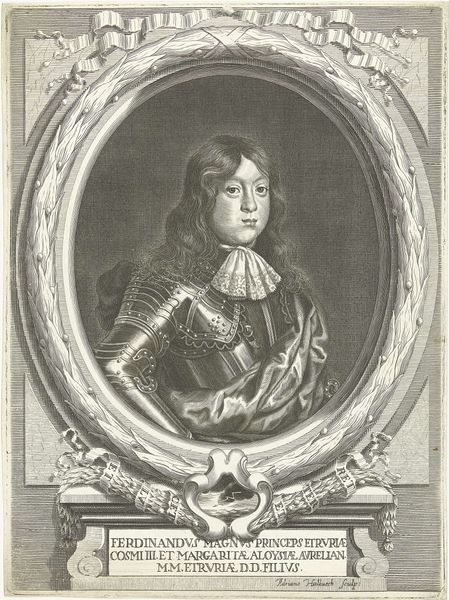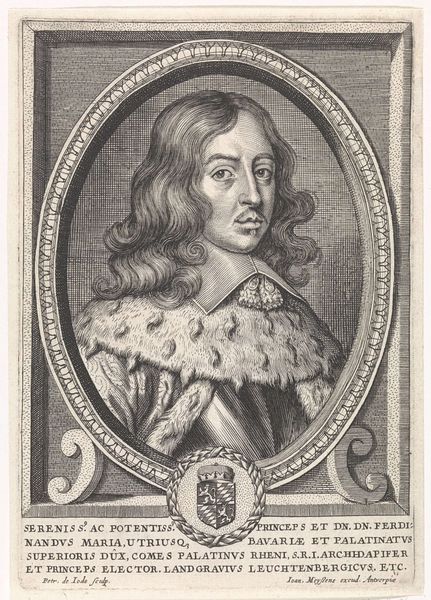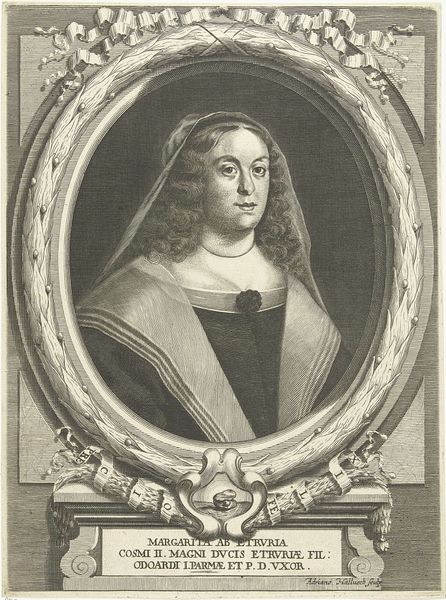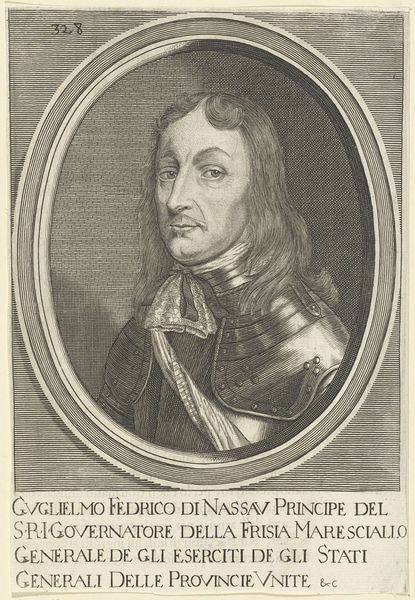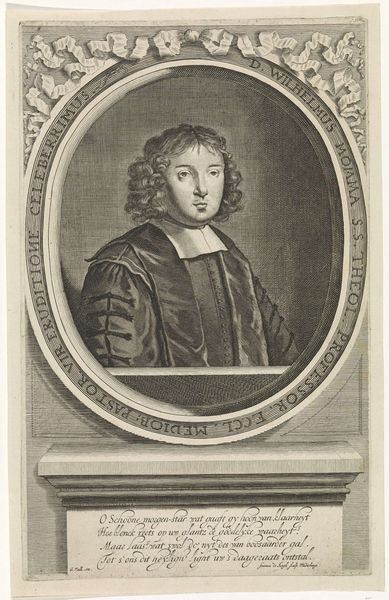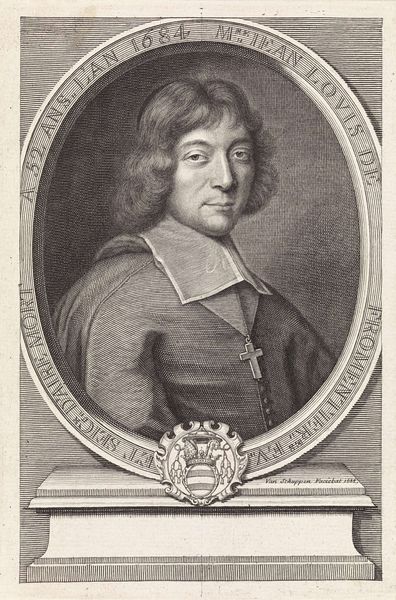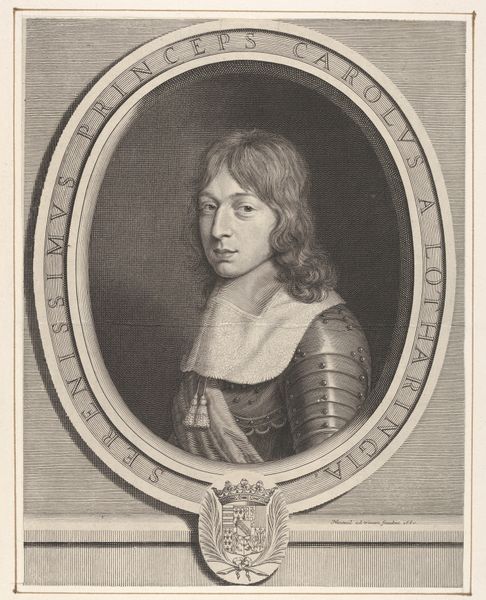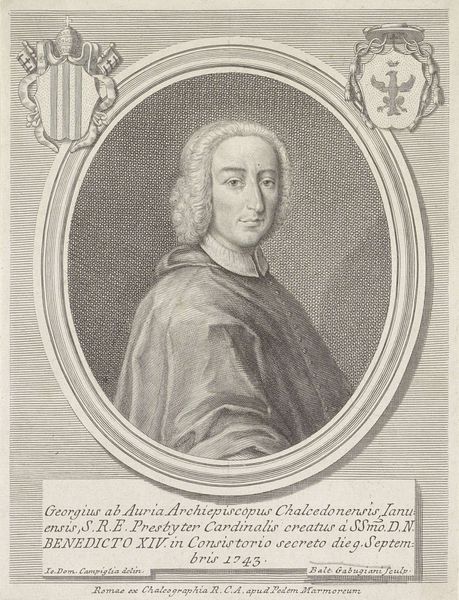
engraving
#
portrait
#
baroque
#
portrait image
#
history-painting
#
engraving
Dimensions: height 243 mm, width 188 mm
Copyright: Rijks Museum: Open Domain
Curator: What a compelling engraving! This is "Portret van Gabriel de la Vie, avocat-général" by Pieter van Schuppen, created in 1664. We can find this portrait at the Rijksmuseum. The level of detail that the artist could achieve through this print medium during the Baroque era never ceases to amaze me. Editor: It's rather somber, isn’t it? Even with the elaborate wreath and cartouche framing him, there’s a melancholy quality about his gaze. Almost like he’s peering into the future. What can you tell us about de la Vie and his world? Curator: Gabriel de la Vie held the important position of avocat-général, or attorney general. During the 17th century, the Dutch Republic experienced a Golden Age with massive expansion, particularly through trade. His image, therefore, carries political weight, even more than the other usual displays of class in Baroque art, like that lovely Laurel wreath that suggests he is somehow triumphant. Editor: The wreath seems almost funereal, interwoven as it is like ribbon. Speaking of ribbons, the cartouche at the bottom—I find the inscription particularly interesting. Is that “Post Funera Vivo”? “After death, I live.” It adds another layer, hinting perhaps at legacy, immortality through office or memory. I can also tell the symbol on the cartouche likely belonged to this official somehow. Curator: Precisely. Such images had clear political ends; engraving allowed for wide distribution and reproduction, enabling the image of important political figures like de la Vie to reach a broad public. These prints were often collected into series, visually documenting powerful figures and solidifying the structure of the state. Editor: It gives one pause. What do we gain by visually enshrining political elites in a way that allows their imagery to reach wide audiences? Who and what are we including and excluding? Curator: Those are crucial questions to continue asking of art such as this. Understanding both the power and limitations inherent within these reproduced images and in the institutions who commission and circulate them will, hopefully, give us the proper insights. Editor: It’s easy to get lost in the impressive texture and Baroque symbolism, but that question is absolutely vital: who is remembered, and why?
Comments
No comments
Be the first to comment and join the conversation on the ultimate creative platform.
